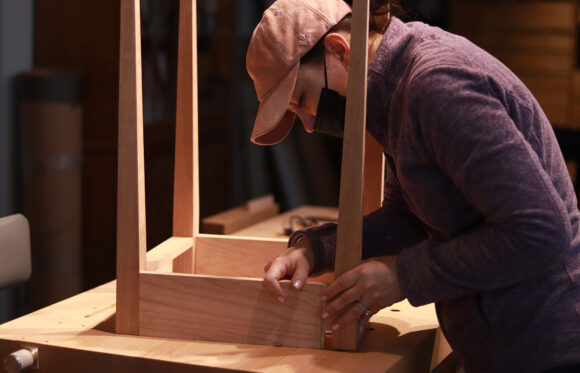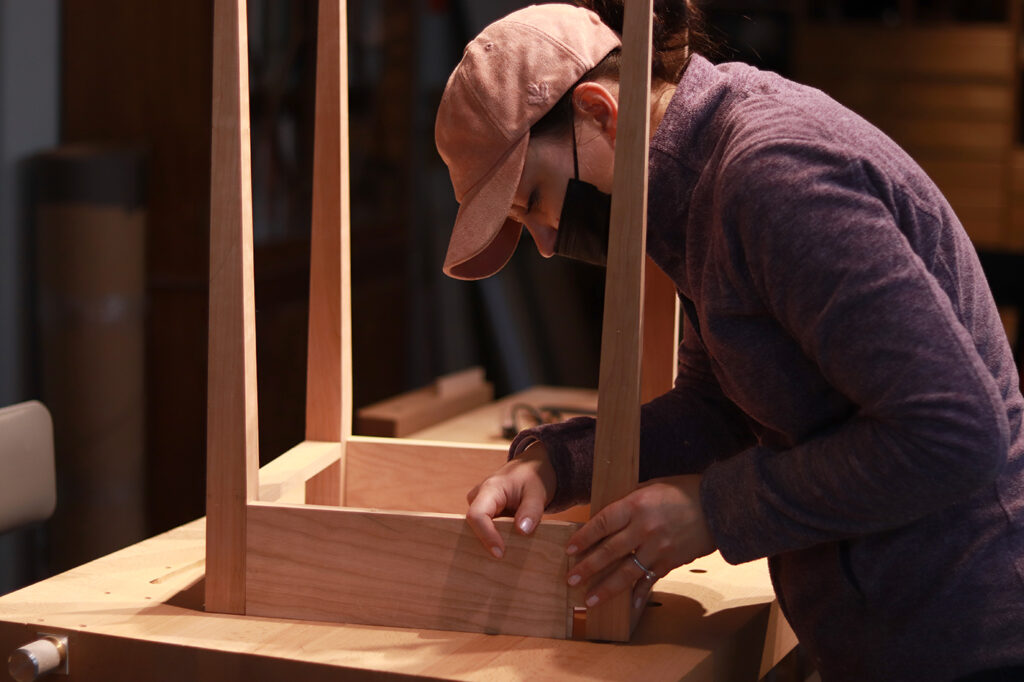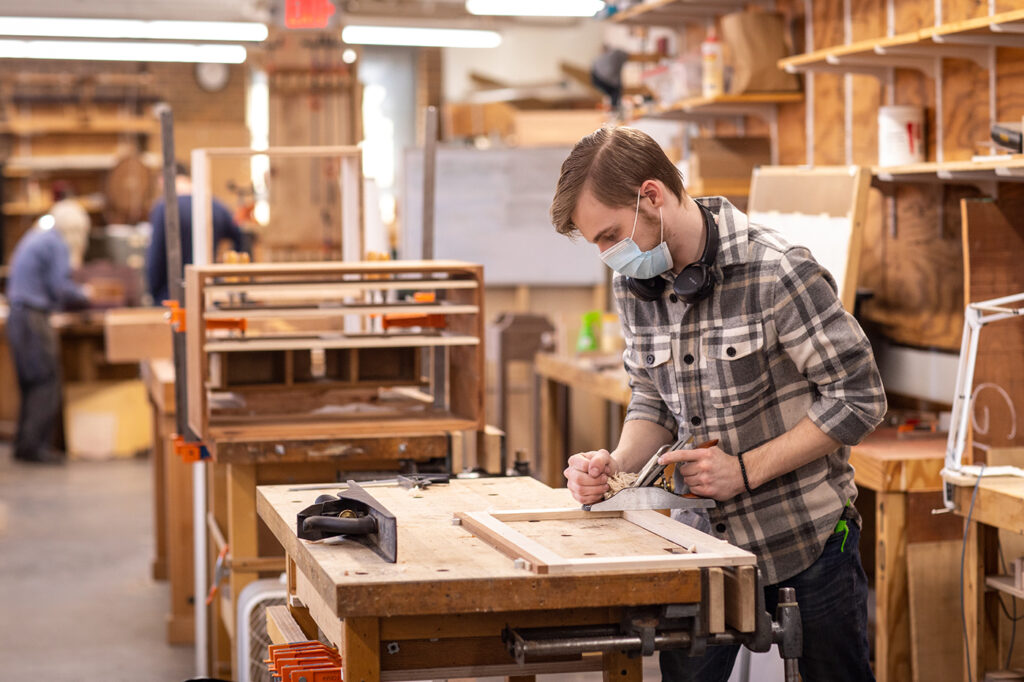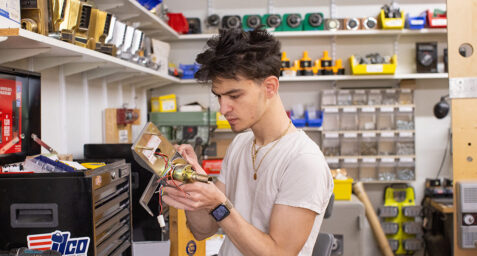Simple Doesn’t Mean Easy

Categories
Cabinet & Furniture MakingThe Real Work Behind That Minimalist Piece of Furniture
Have you ever looked at a simple, unadorned handmade chair and been struck by it? Perhaps it’s the beauty of the wood grain, or the angle and shape of the legs, or the curve of a chair back or seat. Or it could be a balanced design that perfectly melds function and aesthetic appeal.

But just because that chair may look simple, it doesn’t mean it was easy or quick to construct. Every piece of handmade furniture represents an exacting, thoughtful process involving as much preparation as it does execution, not to mention the specialized training and knowledge it requires to even take on such a challenge.
It all starts with laying the right foundation needed to design and execute a functional piece. A look at our comprehensive Cabinet & Furniture Making program curriculum will give you some clues:
Design. Before breaking out their tools and getting to work, furniture makers must first design their piece. These aren’t just sketches but working drawings made with the aid of drafting equipment (the same drawing tools architects and engineers use), giving exact representations of the finished piece. Such drawings rely on the maker’s knowledge of proportion, construction principles, and details such as the incorporation of design-appropriate woodworking joints.
Materials and Cost. Once designed, needed materials and hardware are determined and costs estimated. Details matter. Even the type and grain of wood will have a major impact on the appearance and impression of the final piece.
Construction Preparation. Before construction can begin, necessary tools and equipment are assembled. With the wide variety of hand and machine tools, the maker has some choices to make and may be guided in some instances by the desired look of the final piece.

Once the maker has a final design, materials, and tools and equipment in place, the work of construction can begin. Well-made furniture is the result of a careful methodical approach with an emphasis on precision. Nothing can be rushed. At every stage from milling, layout, joinery, fitting, and assembly to finishing, patience and skill are key. Seeing an envisioned piece come together step by step is a big part of the overall sense of accomplishment a maker feels as they translate their design into a beautiful final result.
A well-made piece of furniture will function and delight for generations. Take a look at the work of some of our students for the impressive results they’ve achieved. Behind even the most ornate pieces lies the same heart of foundational design and construction as in the simplest pieces. When it comes to furniture making, a maker’s journey may not be short or easy, but each step brings its own satisfaction. Perhaps that is part of the reason the process is so fulfilling.

